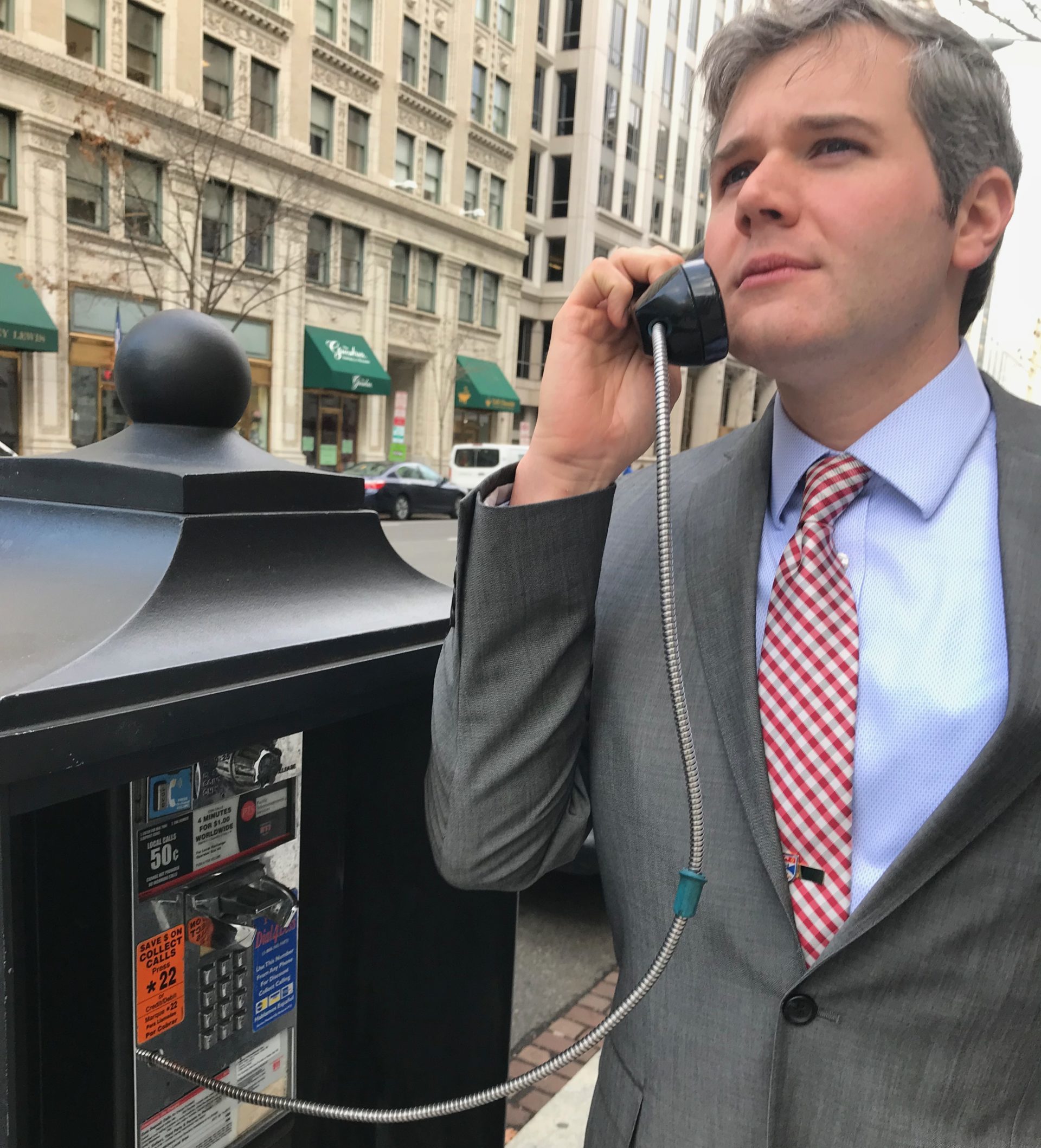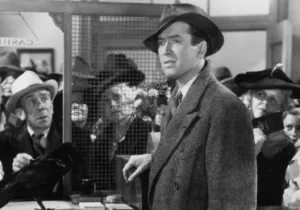One of my favorite DC events has been the embassy open houses, when over the course of two Saturdays numerous foreign embassies allow the general public onto their sovereign territory to look around. Previous commitments prevented me from going last month, but last year the German embassy had a beer garden on their grounds; the Belgians handed out free beer and chocolates; the Brits let us walk through the ambassador’s beautiful residence; South Korea played k-pop music videos. However, the Ukrainian embassy offered the most memorable experience, which came back to mind while researching my last article about Ukraine winning Eurovision.
Showing up to the Ukraine embassy early helped since we could avoid any lines that usually appear after lunch. The building itself makes the visit worthwhile for history buffs. Older than the District, the large federal townhouse in Georgetown hosted a dinner in 1791 where George Washington and others agreed upon the purchase of land for a new national capital. The building then became the residence of William Marbury during the landmark Marbury v. Madison court case, which decided the Supreme Court could declare acts of Congress unconstitutional. For those not interested in history, free pints of Ukrainian beer (even at 11am) were available in the courtyard downstairs.
For me, the most remarkable part of the open house event was meeting Ukrainians who participated in the Euromaidan protests. While only speaking a little bit of English, they handed me a riot shield, helmet, and flag protesters had used during the protests that led to the downfall of Yanukovych, Ukraine’s pro-Putin president until 2014. One of the older gentlemen shoved the yellow and blue flag in my face and told me to smell the lingering tear gas in the fabric. The flag did have a funky odor, though I fortunately don’t have the practical experience necessary to confirm it was tear gas.
The highlight of my embassy visits was holding the shield and feeling its weight while thinking about those whom the snipers killed during the Euromaidan. Along with the art exhibit celebrating the revolution and another exhibit about Crimea, the whole open house had a strong anti-Putin, pro-Ukraine narrative.
Whether intentional or not, the Ukrainian embassy’s open house was a clever play at soft power, specifically through attraction. A wide variety of people attend these events, but foreign policy wonks or those producing news media were inevitably in the crowd. Some university students and Hill staffers looking for free entertainment also attended, and though they may not have much power today, they very well may in future. Given this event’s relatively low costs and targeted audience, the Ukrainians should reap a high return on investment. Moreover, the Euromaidan narrative presented was both simple to understand and easily digestible for people living in a democracy, even if the narrative wasn’t the complete story.
Clarifying what is meant by “soft power”, including what it can and cannot accomplish, is important. As Joseph Nye explains in The Future of Power (a handbook for “smart power”—combining soft and hard power towards an effective policy), soft power is not an alternative to hard power. It is merely a different kind of power that has always existed (even Machiavelli wrote that a Prince should not be hated). Policies implemented through soft power are not inherently morally superior to policies that require military action, and rulers can use soft power to facilitate injustice. Nye writes:
But soft power is descriptive, rather than a normative concept. Like any form of power, it can be wielded for good or bad purposes. Hitler, Stalin, and Mao all possessed a great deal of soft power in the eyes of their acolytes, but that did not make it good. It is not necessarily better to twist minds than to twist arms. (81)
Though rulers may twist minds to implement immoral policies, having soft power in the foreign policy toolkit enables governments to pursue agendas a column of tanks cannot easily execute (82-84). A large U-Haul truck can help someone move to a new house better than a bike (as the comedy Portlandia shows), but using that same gas-guzzling truck to get back and forth from work is cumbersome. Similarly, a strong navy can keep sea-lanes open to enable trade, but it cannot effectively convince citizens in democratic countries to sign a free trade deal. Instead, soft power creates an “enabling environment” where a government (especially a democratic one) can enact policies another government wants (94-95). In contrast, soft power cannot generally convince pirates not to raid container ships or cybercriminals not to hack into bank accounts.
In the specific case of open house embassy event, Ukraine used public diplomacy to attract Americans with a compelling narrative. Success depended largely upon how the audience viewed it:
Narratives are particularly important in framing issues in persuasive ways so that some “facts” become important and others fall by the wayside… Again, it is not just the influence effort by the agent, but also the perceptions by the targets that are critical for the creation of soft power. (93-94)
Thus, Ukrainians emphasized the Euromaidan protests with a riot shield and flag while also conveying their struggle against Russia, but they ignored other problems Ukraine’s government faces or what protestors may have done. For some, the narrative fits easily into concept of fighting for democracy, and the Ukrainians could then use this empathy and ensuing enabling environment to push for policies that favor them, whether sanctions against Russia or otherwise. For others (including those Russians who point to Vice President Biden’s youngest son being hired by a Ukrainian gas firm as a sign of American hypocrisy), the same narrative could cause revulsion and therefore a “disabling environment” (there was, after all, a painting of Ukrainians attacking a bear). The line between what Nye would consider to be a legitimate narrative and manipulative propaganda appears thin (though I prefer a different definition for “propaganda” than Nye). Furthermore, the public diplomacy would have also been less effective in a country without democracy because an autocratic government can more easily ignore public opinion, though the Arab Spring has shown why dictators must still be wary of popular uprisings.
The embassy’s public diplomacy did have more success in part because it could be viewed as authentic, thanks to having the objects there. Physically touching the riot shield, flag, and helmet used in the Euromaidan made those events seem more real than just watching a Frontline documentary—even if that documentary showed a protestor being shot by a sniper and then later bodies of some of the 100-plus killed throughout the protests.
Ukraine’s success should not be overstated, though, because it was just one event. Whereas other types of soft power projection can occur quickly, public diplomacy may take years (105-106). This open house should be viewed as Ukraine planting a seed that may eventually bear fruit after much careful gardening. Missteps could easily trample and kill the seedling, in the same way that Russia’s initial claim that the “little green men” invading Crimea weren’t Russian caused it to lose credibility and soft power in various countries.
If Russia had been more careful, it could have gained widespread soft power, but the loss may require years of recovery. Nye explains, “Soft power may appear less risky than economic or military power, but it is often hard to use, easy to lose, and costly to reestablish” (83). Elsewhere in Project Syndicate, he argues that Russia’s narratives and use of propaganda via state-sponsored media, which cannot effectively criticize Putin and the Russian government, severely hampers its ability to use attraction to gain soft power. Citing Sergei Karaganov, he also concludes that Russia’s lack of soft power caused it to use the one power it does have to implement policies, military force, in Ukraine and Georgia. As a solution, Russia could free up its news media so that it looks more like the BBC, an organization funded by the government yet still has credibility because it can effectively criticize of that government. However, autocratic governments are unlikely to heed his advice because criticisms disseminated by a free press could prompt the public to demand changes contrary to the autocrats’ wishes. Worse, a Euromaidan-type event could happen in their own capitals.
Russia’s clear lack of soft power made the Ukrainian embassy’s open house more effective, even if it was only one seedling that may take years to fully blossom. The event should teach Americans, including Christian realists, that soft power can be an effective tool to attain certain goals, especially in democratic countries, though it is not a replacement for hard power. Additionally, using public diplomacy to gain soft power through attraction can take years, and missteps can quickly ruin any gains. Along with civil society actors, embassies can project soft power and thus create the enabling environment that benefits US foreign policy, so Americans should pay more attention to those factors which benefit or hinder these efforts.
—
Mark Melton is the Deputy Editor for Providence. He earned his Master’s degree in International Relations from the University of St. Andrews and has a specialization in civil conflict and European politics.
Photo Credit: Art display at the Ukrainian Embassy’s open house event in May 2015. Notice that the soldier playing the bandura (a traditional Ukrainian folk instrument) is wearing a helmet that says “Freedom or Death” in English on the front. Also, in the background soldiers are defending against a bear attack with a rifle and spear. Photo provided by Embassy of Ukraine in the United States of America at http://usa.mfa.gov.ua.







 Live in the DC area? Sign-up for Providence's in-person events list!
Live in the DC area? Sign-up for Providence's in-person events list!